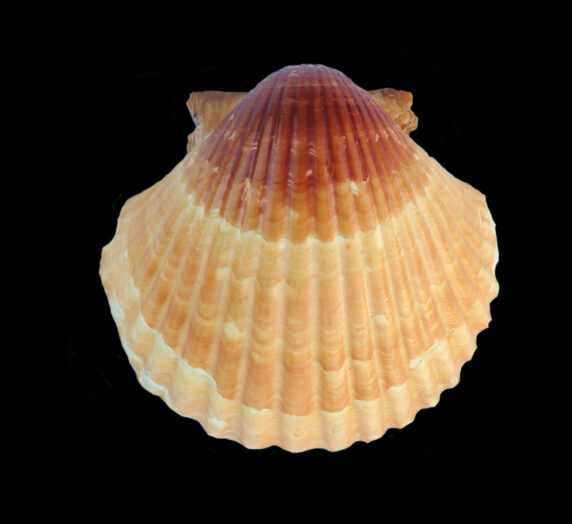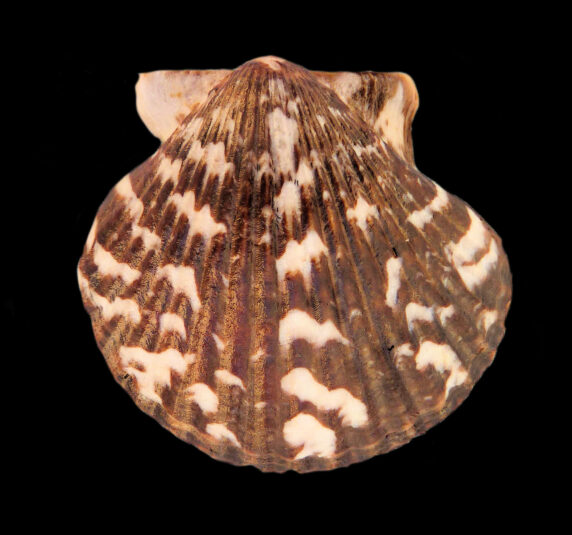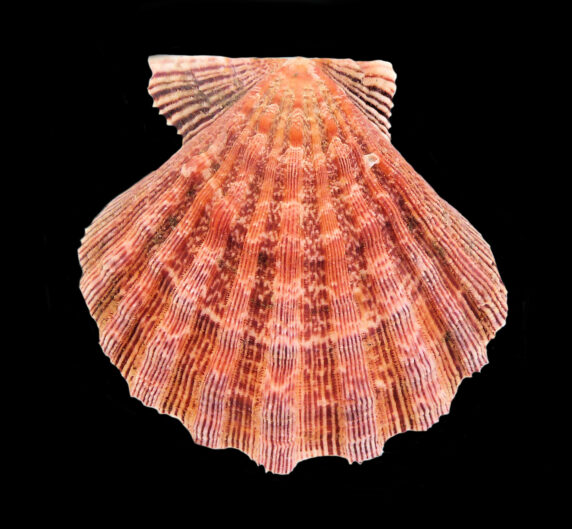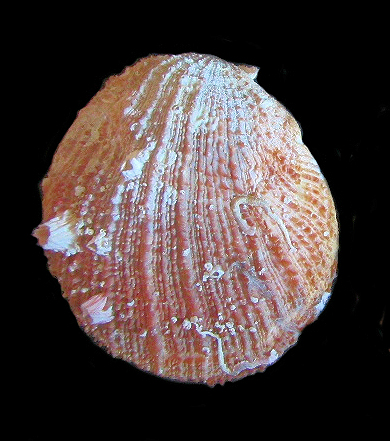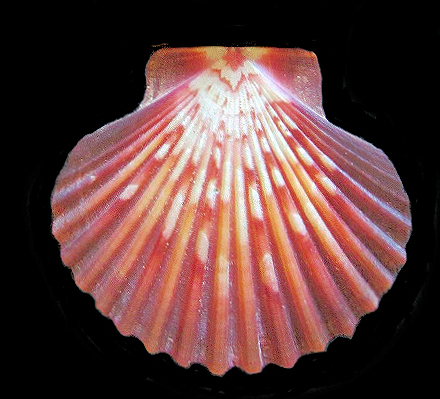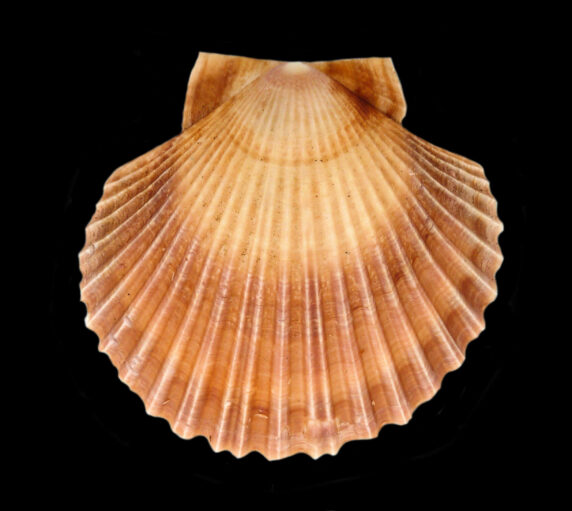Scallops of the Pectinidae Family are bivalve mollusks that are also know as Pectens (derived from the Latin word for “comb”) and in Mexico as la vieira. The shells have a nearly circular profile with a flat edge at the hinge that is made up of two projecting, triangular shaped “ears” (auricles) and lacks teeth. These Scallops Shells vary in shape with some being equivaled (both valves have the same shape) and others have a convex right valve and a flat or slightly concave left valve. The shells are ribbed with scalloped margins. They resides on the bottom with the right valve down. They have a row of simple eyes, utilized to decipher light from dark and aide in predation avoidance, along their mantle with some species having as many as one hundred eyes. Scallops have valves with different colors with the left valve being darker than the right valve. They are filter feeders consuming plankton and fine detritus from the adjacent waters. In turn they are preyed upon by crabs, rays, sea stars and sharks. Juvenile scallops will often attach themselves to solid substrate via a byssus. Adult scallops are generally free swimming, moving with a jerky motion, by quickly opening and closing the two valves. This “jet propulsion” utilizes a strong adductor muscle to open and close the valves.
Pectinidae Scallops are found in all seas, from intertidal to very deep waters. There are over two hundred fifty species in the family of which twenty are found along the coastlines of the Baja peninsula. Scallop shells have historically been used artistically as religious symbols, fertility symbols, and coats of arms. The adductor muscle of these scallops is the edible and many species of scallops are fished commercially including via farming.
